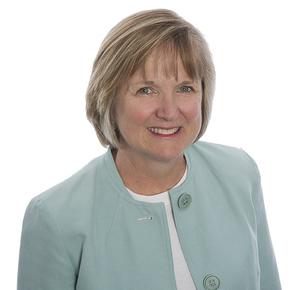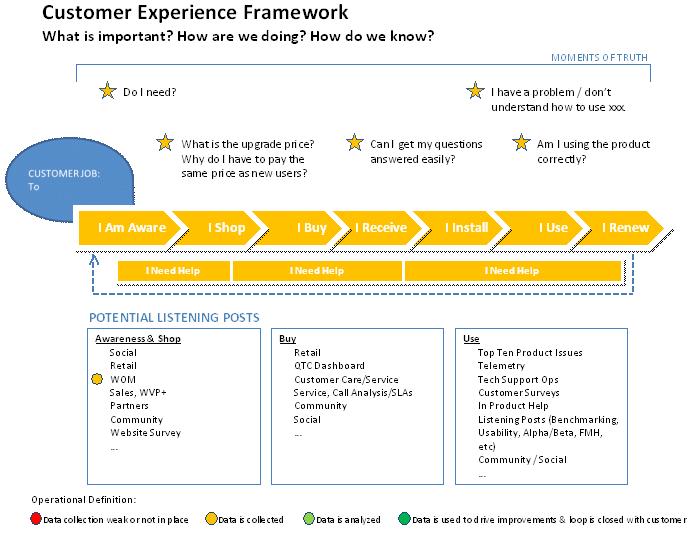
Vicki Amon-Higa
- 30 years of Global Customer and Patient Experience working across silos to extend relationships with customers and create deeper loyalty.
- Client sectors include: Healthcare; Consumer, Small Business and Enterprise Software; Defense Contractor; Electric Utility; Animated Film; Computer Hardware and Non-Profit.
- Specialties: Customer Experience; Lean/TPS; Process/Organizational Excellence; Business Process Improvement.

- All 7 Best Practices
- Pre-Meeting Discovery Process
- One-on-One Call with Expert
- Meeting Summary Report
- Post-Meeting Engagement

Driving Growth Through Customer Experience - Design Thinking, Digital Transformation
Overview
Businesses exist because they serve customers. And the best way to create offerings that meet the needs and preferences of your customers is to get inside the end-to-end customer experience.
This means knowing what it feels like to be the customer not only when the customer is interacting with the product, but during the discovery, the sale, the installation, and first use, when the customer needs help when something goes wrong, or wants to learn more. The best way to create customer and brand loyalty which result in gaining a bigger share-of-wallet gain is to understand every aspect of the customer’s experience and to incorporate this knowledge into your offerings.
Customer experience is a journey. It's a marathon and not a sprint.
The customer’s end-to-end experience with your offering involves the following stages:
- I am aware [of the offering].
- I shop.
- I buy.
- I receive.
- I install.
- I use.
- I renew.
- I get my questions answered or get help.
The customer-experience journey is a cross-functional endeavor. It involves a multidisciplinary team with a strong leader who is responsible for the end-to-end process. However, each of these stages will engage representatives from different functions in different ways. For example, “I am aware” is largely marketing’s purview, while “I install” is largely an engineering play.
The first step in the process, then, is to assemble the cross-functional team that will first reach into the mind and heart of the customer and then deliver an offering based on what the team has learned. The broad questions this team sets out to answer are:
- What is important to customers?
- How are we doing in terms of meeting their needs and preferences?
- How do we know we have met them?
- What are our priorities to improve?
The next step is to meet as a team and map out what the team believes to be the customer experience – starting from the pain point or customer need. This is the main reason that customers seek out your offering in the first place. Then, the cross-functional team maps out what they think the customer experience is in each of the phases listed above ("I am aware," "I shop," etc.). This is a simple red/yellow/green rating by the cross-functional team, starting with an "inside-out" view.

Here are key junctures in the customer experience journey:
- Early on, the team identifies listening posts that provide vital information about the customer's experience. Try to establish listening posts that reveal the customer's experience throughout their interactions with your offering or potential offering. These may take the form of user groups, social media sites and surveys that provide real-time customer data. Collect and analyze this data. Many teams will find that these listening posts exist, but oftentimes very little is done with the data.
- Spending time with customers is the next leg. Team members observe customer behavior by applying a "follow me home" methodology (ethnographic research) to see how they become aware of an offering, how they install it, use it or interact with it. This is a structured exercise where, over the course of the week, team members visit about 30 homes or businesses, typically in teams of three. The goal is to answer the question: “What does it really feel like to be our customer?”
- This activity transforms the team's inside-out view into an outside-in view. The teams will discover the moments of truth – the points in a customer experience at which the customer has an emotional reaction, positive or negative, to doing business with you. The teams should visit existing customers, potential customers and, if applicable, former customers – that is, customers who may have used your offering in the past but no longer do. The follow me home activity is iterative. Members of the broader cross-functional team will continue to conduct these visits at various stages of the product or service development process.
- The team then builds a map detailing what it feels like to be a customer, based on its research. At this stage, many teams discover that they have been investing resources in features and products that have little or no impact on the customer's experience or those that don't matter to customers.
- It is at this stage that the team enters the discover phase of a "design for delight" methodology. This the first phase of a four-phase approach: discovering, defining, designing and delivering offerings based on your new outside-in view of the customer experience. Whether it is solving problems related to an existing offering or creating brand-new design, the team defines, designs and delivers an offering to the market tailored around the customer's end-to-end experience. During the design phase, it once again visits customers not to validate its ideas but to learn even more about the customer.
